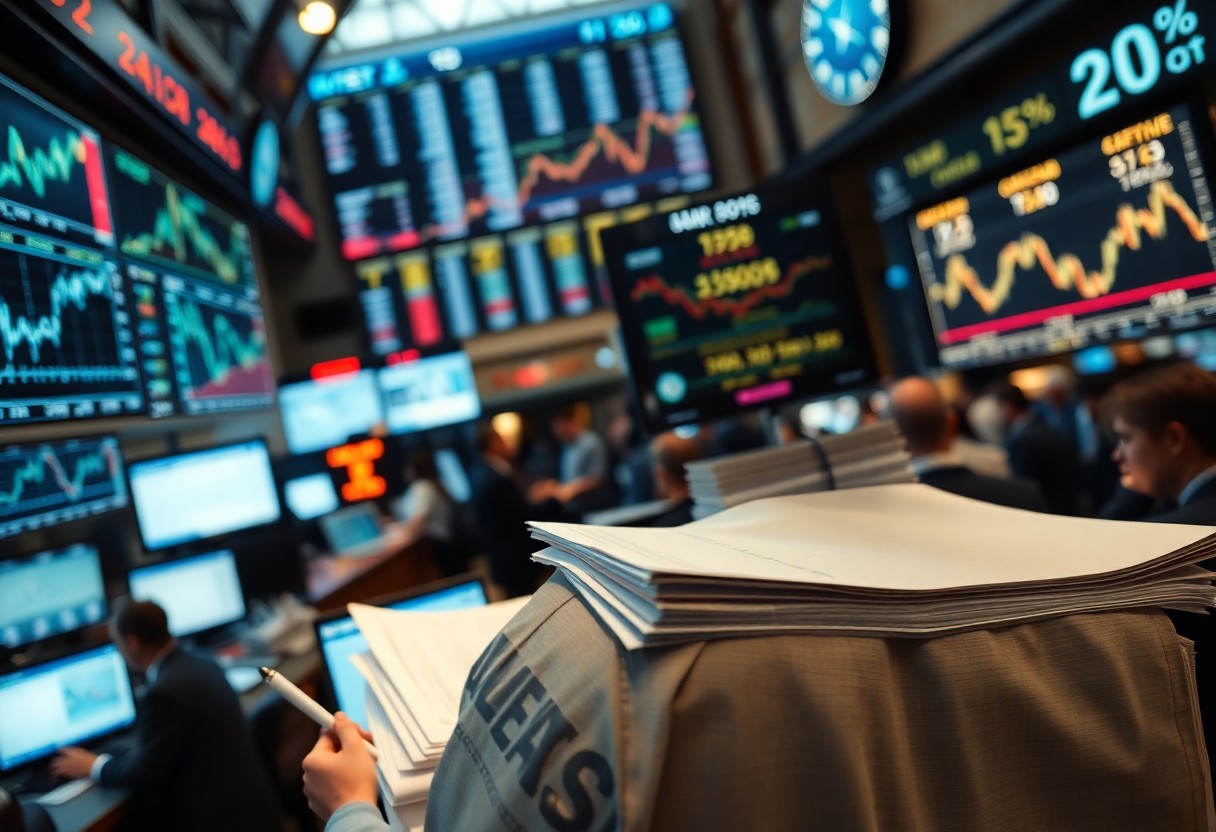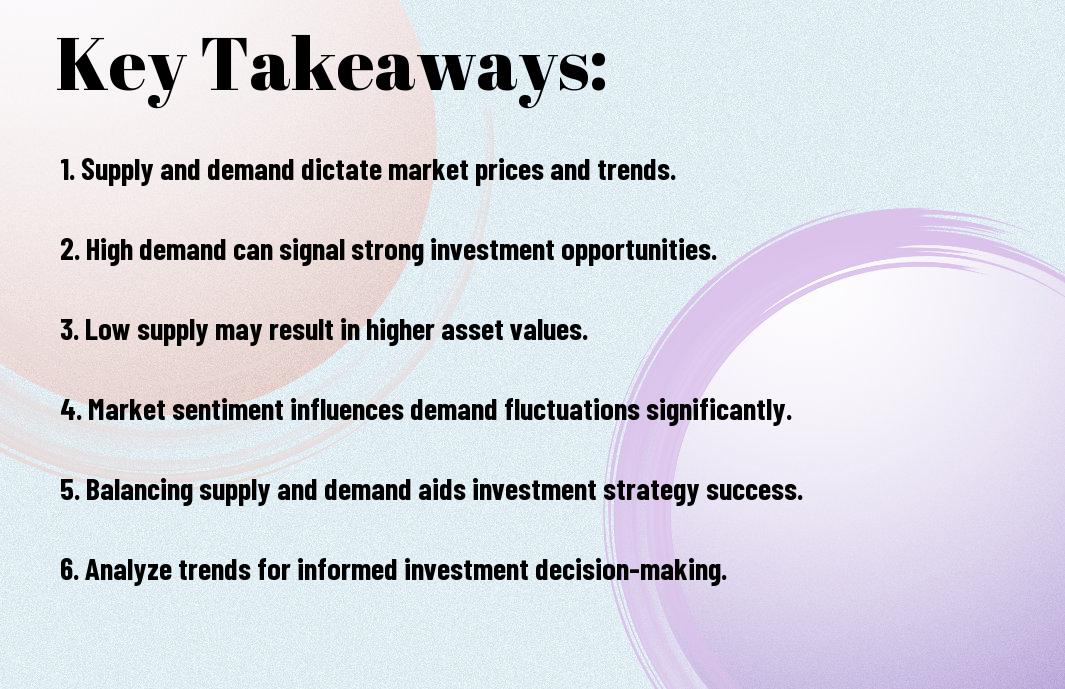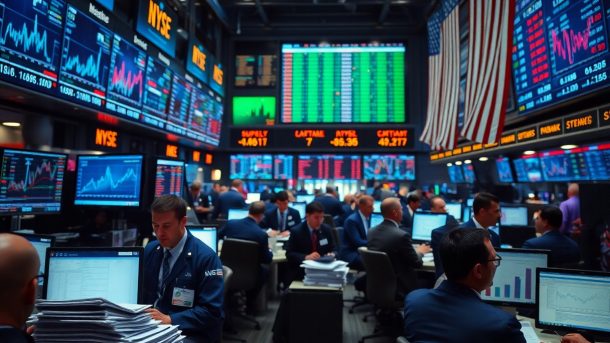Supply and demand are fundamental concepts that significantly influence your investment decisions. Understanding how these forces interact can enhance your ability to assess market trends, pricing, and potential opportunities. When you grasp the principles of supply and demand, you can make more informed choices, optimizing your portfolio’s performance. This post will research into the impact of these economic principles on your investment strategies, helping you navigate the complexities of the financial markets effectively.

Key Takeaways:
- Market Dynamics: Supply and demand directly influence the pricing of assets, impacting investment opportunities and strategies.
- Investor Behavior: Understanding the balance between supply and demand can help investors anticipate market trends and make informed decisions.
- Risk Assessment: Evaluating supply and demand conditions aids in assessing the potential risks associated with investments, leading to better risk management.

Understanding Supply and Demand
Your investment decisions can significantly benefit from a solid understanding of supply and demand dynamics. These economic principles are necessary in shaping market behavior and pricing strategies, helping you to make informed choices about when and how to invest.
Definition of Supply and Demand
Demand refers to the quantity of a product or asset that buyers are willing and able to purchase at various price levels. Conversely, supply is the amount that sellers are prepared to offer in the market. Together, these concepts illustrate the interaction that defines market dynamics.
The Relationship Between Supply and Demand
Before making investment decisions, it’s vital to grasp how supply and demand affect asset value. When demand outstrips supply, prices tend to rise, signaling an opportunity for profit. Conversely, an oversupply with weak demand can lead to lower prices, potentially resulting in losses.
This interplay creates various market scenarios that influence your investment outcomes. For instance, understanding how trends in consumer preferences can shift demand helps you identify emerging investment opportunities. Additionally, recognizing the implications of changes in supply—like regulatory impacts or technological advancements—can help you anticipate price movements and adjust your strategy accordingly.
The Supply and Demand Framework in Investments
Clearly, understanding the supply and demand framework is crucial for making informed investment decisions. This model helps you assess how the availability of assets (supply) and the desire to own them (demand) interact, ultimately influencing asset prices and market dynamics. By analyzing these factors, you can better identify opportunities and risks in your investment journey.
Market Equilibrium
Supply and demand reach market equilibrium when the quantity of an asset that producers are willing to sell matches the quantity that consumers are willing to buy. At this point, the market price stabilizes, leading to optimal resource allocation. For you, this equilibrium can signal when an asset is fairly valued or over/underpriced, guiding your investment choices.
Shifts in Supply and Demand
After identifying market equilibrium, it’s vital to consider how shifts in supply and demand can impact your investments. Various factors, such as economic changes, technological advancements, or regulatory updates, can cause these shifts, altering the equilibrium price.
Market shifts alert you to trends that could greatly affect asset values. For instance, an increase in demand due to emerging technologies could raise prices, while an oversupply of a resource might depress them. By monitoring these shifts, you can adjust your investment strategy to capitalize on opportunities or sidestep potential losses, ensuring your decisions remain aligned with current market conditions.
Factors Influencing Supply and Demand
All investment decisions are shaped by various factors that directly affect supply and demand. These factors can include:
- Market trends
- Consumer preferences
- Economic policies
- Technological advancements
- Global events
Perceiving these influences can help you better navigate market dynamics. For a deeper understanding, you may explore Supply and Demand: Why Markets Tick.
Economic Indicators
After examining various aspects of the market, you should consider economic indicators which reflect the overall economic health. These include employment rates, inflation, and GDP growth rates. Your investment choices can be significantly swayed by these indicators, as they signal the potential demand and supply for assets.
Market Sentiment
Before making investment decisions, it’s vital to understand market sentiment. This refers to the overall attitude of investors toward a particular security or financial market. Your perception of market sentiment can guide you in predicting price movements and trends.
In fact, market sentiment can be fueled by news, social media, and economic reports, influencing how you and other investors react to market changes. Positive sentiment may drive prices up, while negative sentiment tends to push them down. Understanding sentiment will enable you to make more informed investments.
Case Studies: Supply and Demand in Action
Keep your investment decisions informed by examining prominent case studies that illustrate supply and demand dynamics. Here are some notable examples:
- 2008 Financial Crisis: Housing supply exceeded demand, leading to a market crash with home prices falling by 30% on average.
- Tech Stocks Surge (2020-2021): Increased demand for technology during the pandemic resulted in companies like Zoom experiencing a 400% stock price increase.
- Oil Prices in 2022: Supply chain disruptions led to a decrease in oil supply, causing prices to soar by 60% within six months.
- Cryptocurrency Boom: In 2021, a surge in demand for Bitcoin pushed its price from $30,000 to nearly $70,000 in just six months.
Real Estate Market
To navigate the real estate market effectively, you’re wise to consider how supply and demand impact property values. In 2021, demand for homes surged as remote work became the norm, while supply struggled to keep pace, leading to an average price increase of 15% nationwide. Understanding these trends can empower your investment choices.
Stock Market Trends
Supply and demand significantly dictate stock market trends, shaping your investment landscape. A rising demand for stocks of technology companies often drives their prices higher, reflecting your perception of their future performance and innovative potential.
Real demand from investors for equities, particularly in innovative sectors, can lead to remarkable price increases. For instance, when the COVID-19 pandemic shifted consumer habits toward digital solutions, you saw companies like Shopify and Amazon experience market caps soar, illustrating a direct connection between increased demand and stock prices. By staying attuned to these trends, you can make data-driven investment decisions that align with market dynamics.
Behavioral Economics and Investment Decisions
Now, behavioral economics plays a significant role in understanding how you make investment decisions. This field explores the psychological, emotional, and social factors that influence your choices, often leading you to behave in ways that deviate from traditional economic theory. Recognizing these influences can help you navigate the complex landscape of investment and improve your decision-making process.
Investor Psychology
The interplay of your thoughts, feelings, and actions profoundly affects your investment success. Understanding investor psychology allows you to identify patterns in your behavior that may lead to irrational decisions or missed opportunities, ultimately enabling you to make more informed and strategic choices.
Emotional Biases
With emotional biases, your feelings can heavily influence your investment decisions, often clouding judgment. These biases may stem from fear of loss, overconfidence, or herd mentality, leading to mistakes that could otherwise be avoided. Recognizing and managing these biases is necessary for successful investing.
Emotional biases can manifest in various ways, affecting how you perceive risk and opportunity. For instance, loss aversion may cause you to hold onto losing investments too long, while overconfidence might lead you to underestimate potential losses. By acknowledging these influences, you can develop strategies to mitigate their impact, such as implementing a clear investment plan, setting emotional boundaries, and seeking external perspectives to enhance your decision-making process.
Future Trends in Supply and Demand
Despite the unpredictability of markets, future trends in supply and demand will heavily influence your investment strategies. Understanding how macroeconomic factors, societal changes, and technological advancements shape these dynamics is necessary for making informed decisions. You must stay attuned to emerging trends that could signal shifts in consumer preferences and resource availability, enabling you to navigate future investment landscapes effectively.
Technological Innovations
Demand for new technologies is shaping your investment landscape, as innovations lead to increased efficiency and novel products. As businesses adopt cutting-edge solutions, industries transform, creating new markets and opportunities. You should keep an eye on sectors benefitting from advancements in artificial intelligence, renewable energy, and biotechnology, as these areas are likely to drive both supply and demand in the near future.
Global Economic Changes
Technological advancements interact with global economic shifts, impacting supply chains and market dynamics. As economies evolve, you will notice changes in labor markets, production capabilities, and consumer behavior that can significantly affect investment decisions.
In fact, fluctuations in trade policies, economic growth, and geopolitical factors can create both risks and opportunities for your portfolio. Staying informed about these transformations allows you to adjust your strategies in real-time and align your investments with emerging global trends. By monitoring these changes, you position yourself to capitalize on new market opportunities while effectively managing potential risks. Understanding the interconnectedness of global economies ensures that you make more informed and strategic investment choices.
Summing up
Taking this into account, understanding supply and demand is crucial for guiding your investment decisions. When you analyze market trends and consumer behavior, you can better anticipate price movements and identify potential opportunities. By staying informed about these economic principles, you can enhance your investment strategies, mitigate risks, and align your portfolio with market dynamics, ultimately leading to more informed and successful investment choices.
Q: How do supply and demand influence stock prices in the investment market?
A: The interaction of supply and demand plays a significant role in determining stock prices. When demand for a stock exceeds its supply, the price typically rises as investors are willing to pay more to acquire shares. Conversely, if the supply of a stock increases and demand does not match it, the price will usually fall as sellers lower their prices to attract buyers. Investors need to assess these dynamics to make informed decisions about buying or selling stocks based on market trends and investor sentiment.
Q: In what ways can understanding supply and demand help investors predict market trends?
A: By analyzing trends in supply and demand, investors can gain insights into market movements and potential future price changes. For instance, if there is a consistent uptick in demand for a particular sector or asset, it may indicate bullish market sentiment, prompting investors to consider entering the market. In contrast, a surplus of supply could suggest a bearish outlook, signaling a need to reassess investments or consider exiting positions. Awareness of these patterns can lead to strategic decision-making that aligns with market conditions.
Q: How do external factors affect supply and demand in the context of investments?
A: External factors such as economic indicators, government policies, and geopolitical events can significantly impact the supply and demand of various assets. For example, changes in interest rates can affect borrowing costs and consumer spending, thus altering demand for stocks. Similarly, new regulations may influence the supply side by affecting how businesses operate or how assets are traded. Investors should stay informed about these external influences to better understand how they can shift supply and demand, allowing for more accurate investment decisions.



